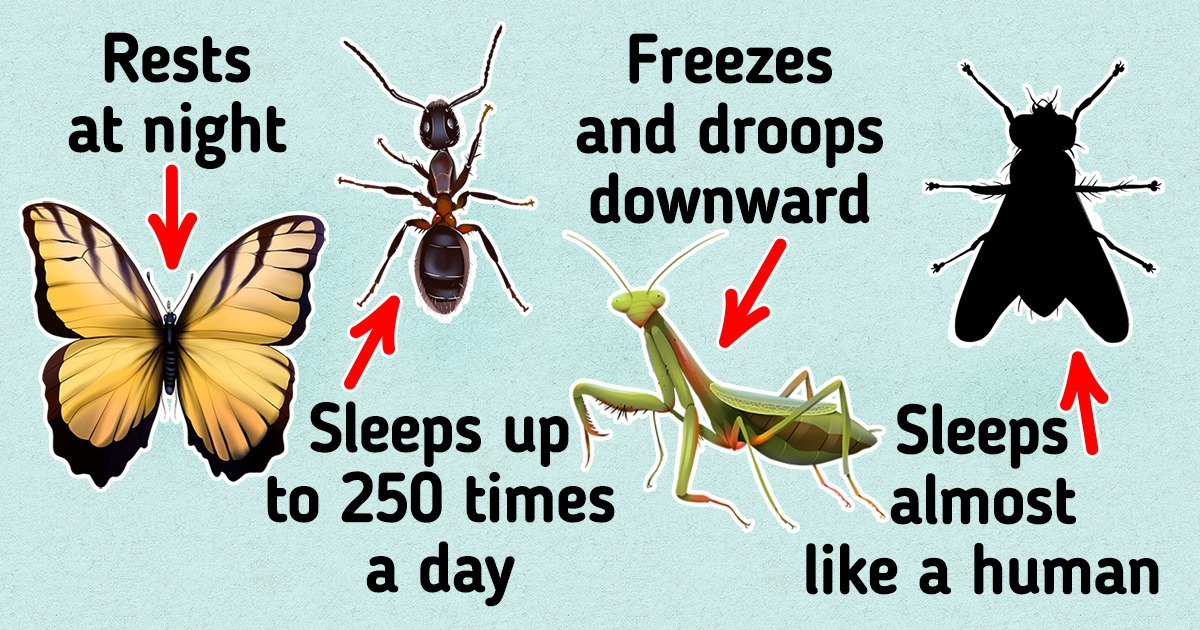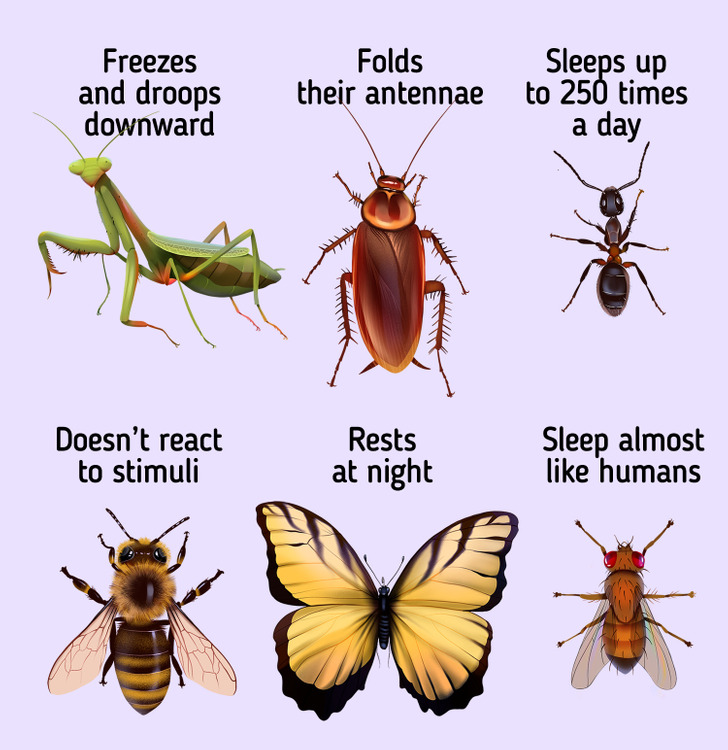How Insects Sleep

Most insects are so small that it’s quite hard to see if they are asleep or not. How can you even tell if an ant or a grasshopper is sleeping?
5-Minute Crafts decided to find out how insects rest and if they need sleep.
The short answer is “Yes, insects sleep.” But since they don’t have eyelids, they sleep with their eyes open.
Cockroaches fold down their antennae when they sleep, protecting their sensory organs. Ants take around 250 short naps a day, retracting their antennae and becoming unresponsive to other ants around them. Praying mantises droop downward and bees don’t react to surrounding noises.
Butterflies rest in the evening, attaching themselves to leaves, tree bark, and other objects. When the temperature goes down, they go into a state that is like dormancy. Without sleep, they can’t eat normally and will lay eggs on the wrong plants.
Fruit fly sleep is the most similar to the sleep we know. They have similar brain activity changes during sleep. Fly sleep is affected by some of the same stimulants and hypnotics that affect mammalian sleep.

Long-term sleep deprivation is a serious problem for people, and insects are no exception. Sleep-deprived honeybees weren’t able to give other bees precise information about food sources and areas for hives. Bees usually use a special dance for communication but sleep-deprived bees had a different dance and didn’t provide the necessary information.
Experiments also showed that fruit flies that are forced to stay awake are slower at learning their way around simple mazes than fruit flies that are allowed sufficient sleep.